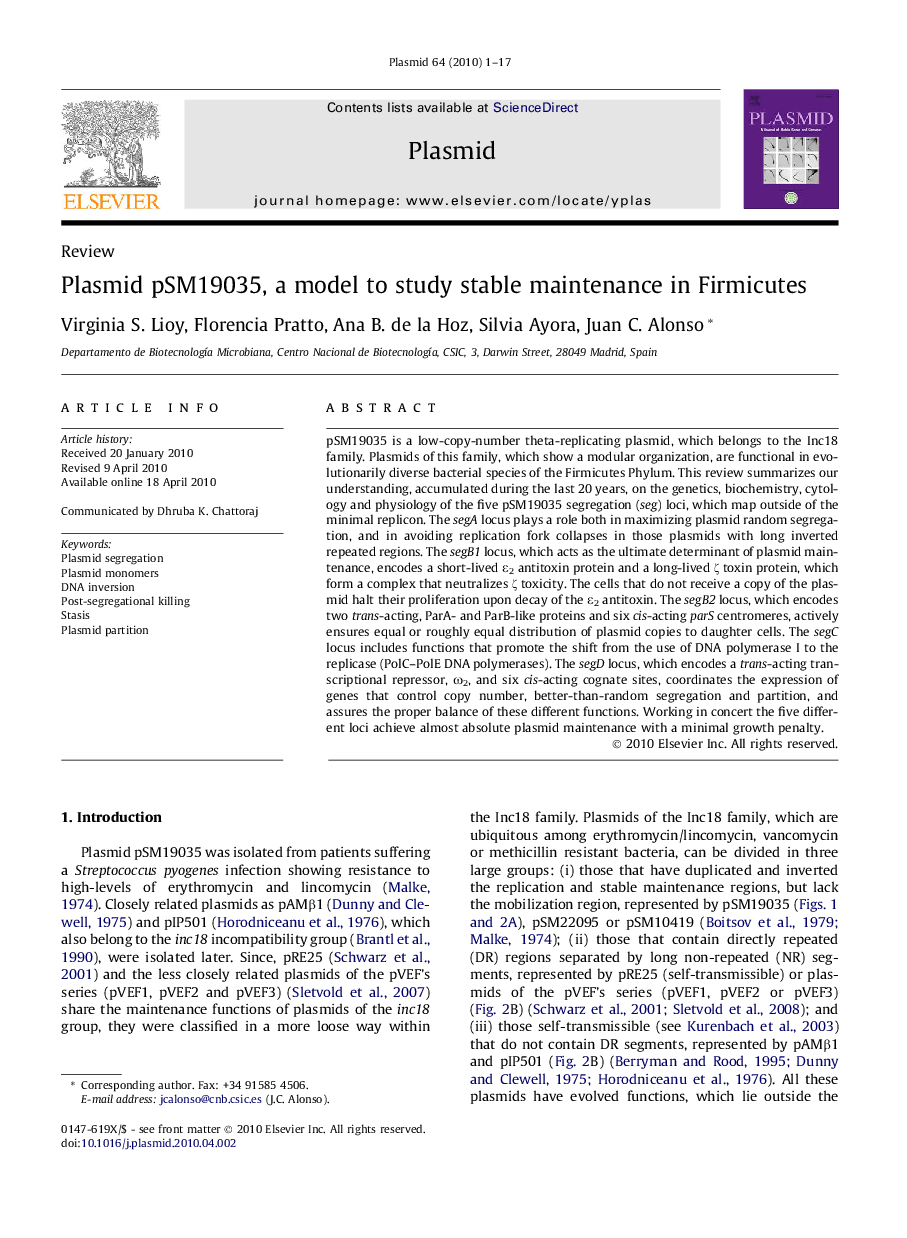| Article ID | Journal | Published Year | Pages | File Type |
|---|---|---|---|---|
| 2824254 | Plasmid | 2010 | 17 Pages |
pSM19035 is a low-copy-number theta-replicating plasmid, which belongs to the Inc18 family. Plasmids of this family, which show a modular organization, are functional in evolutionarily diverse bacterial species of the Firmicutes Phylum. This review summarizes our understanding, accumulated during the last 20 years, on the genetics, biochemistry, cytology and physiology of the five pSM19035 segregation (seg) loci, which map outside of the minimal replicon. The segA locus plays a role both in maximizing plasmid random segregation, and in avoiding replication fork collapses in those plasmids with long inverted repeated regions. The segB1 locus, which acts as the ultimate determinant of plasmid maintenance, encodes a short-lived ε2 antitoxin protein and a long-lived ζ toxin protein, which form a complex that neutralizes ζ toxicity. The cells that do not receive a copy of the plasmid halt their proliferation upon decay of the ε2 antitoxin. The segB2 locus, which encodes two trans-acting, ParA- and ParB-like proteins and six cis-acting parS centromeres, actively ensures equal or roughly equal distribution of plasmid copies to daughter cells. The segC locus includes functions that promote the shift from the use of DNA polymerase I to the replicase (PolC–PolE DNA polymerases). The segD locus, which encodes a trans-acting transcriptional repressor, ω2, and six cis-acting cognate sites, coordinates the expression of genes that control copy number, better-than-random segregation and partition, and assures the proper balance of these different functions. Working in concert the five different loci achieve almost absolute plasmid maintenance with a minimal growth penalty.
